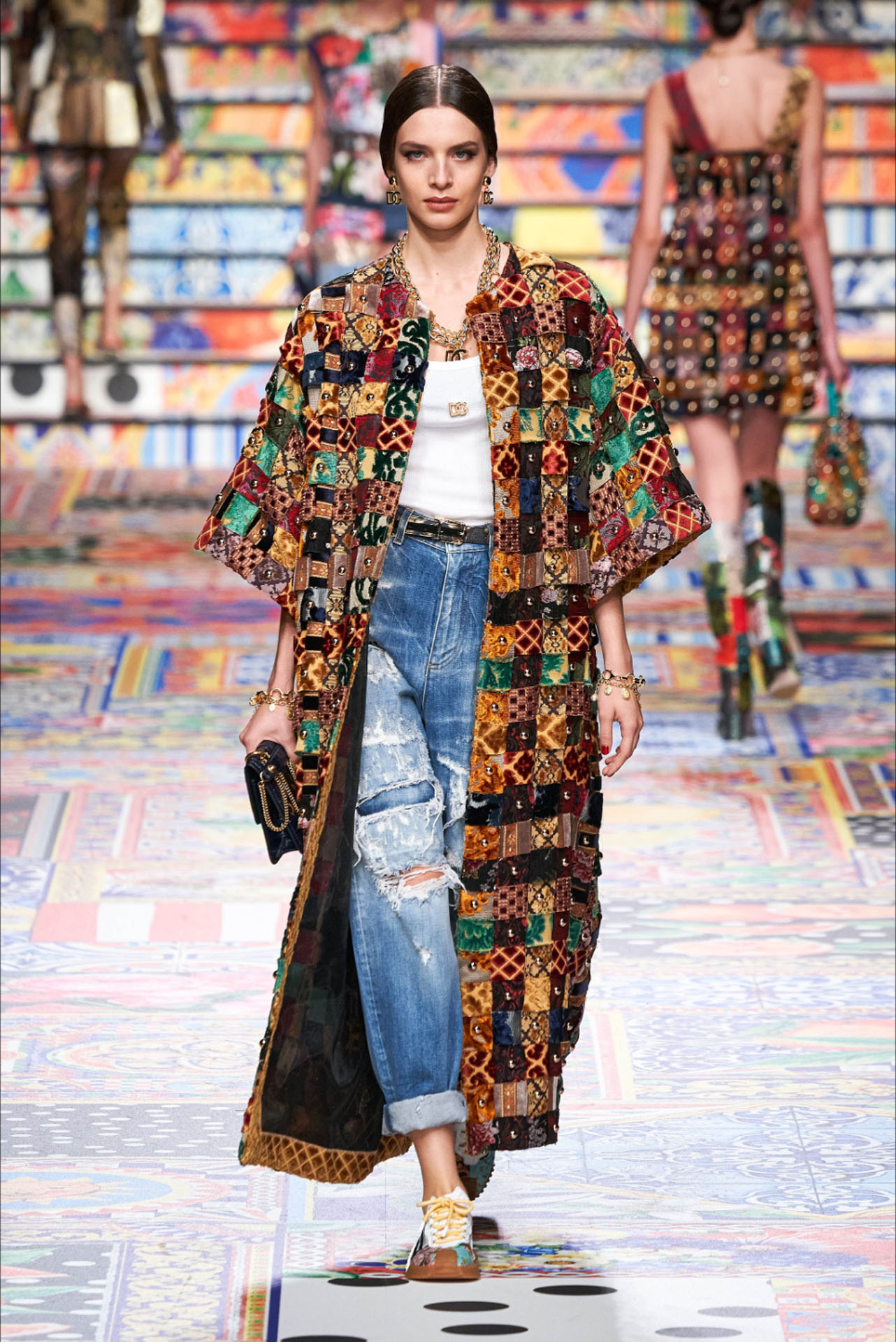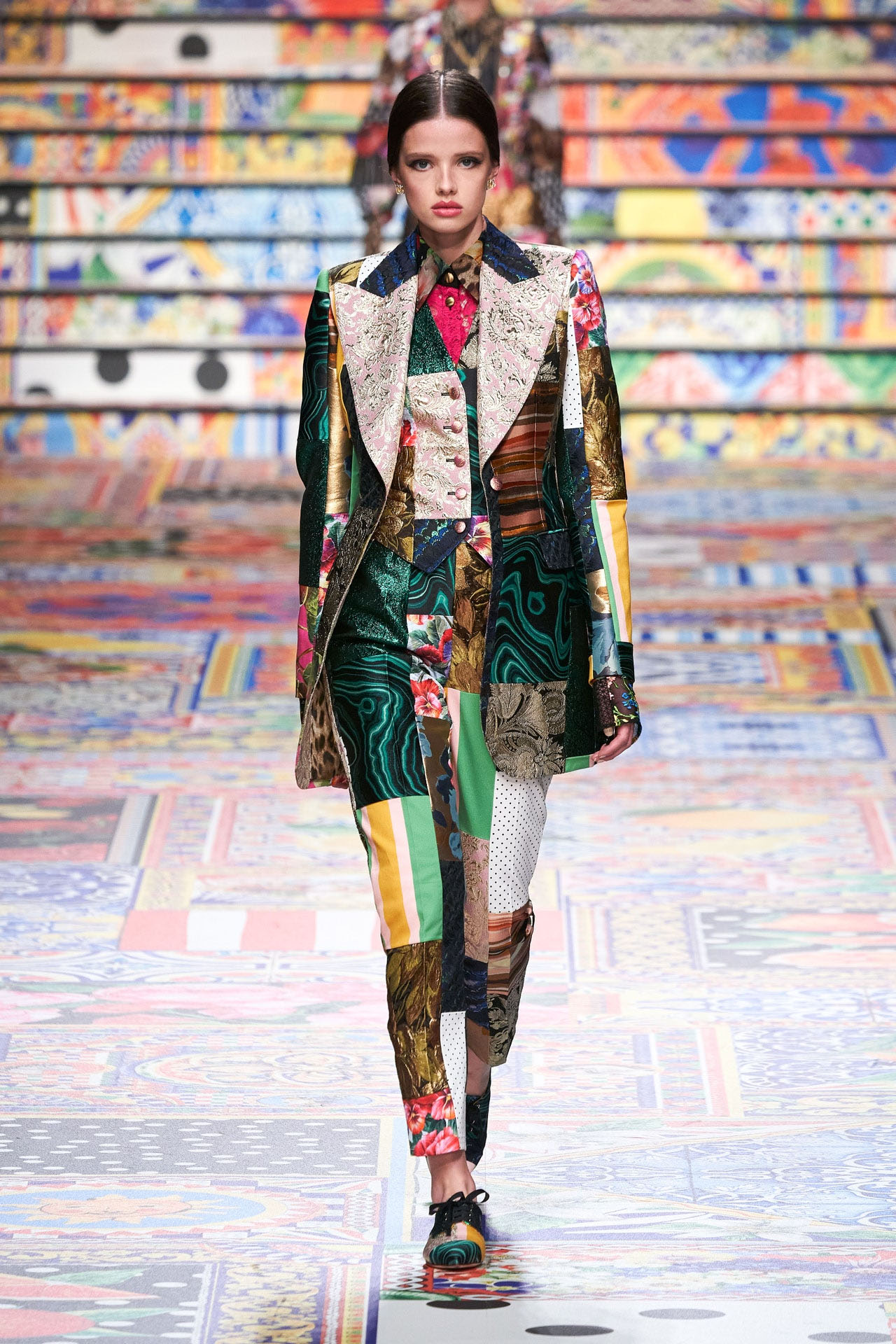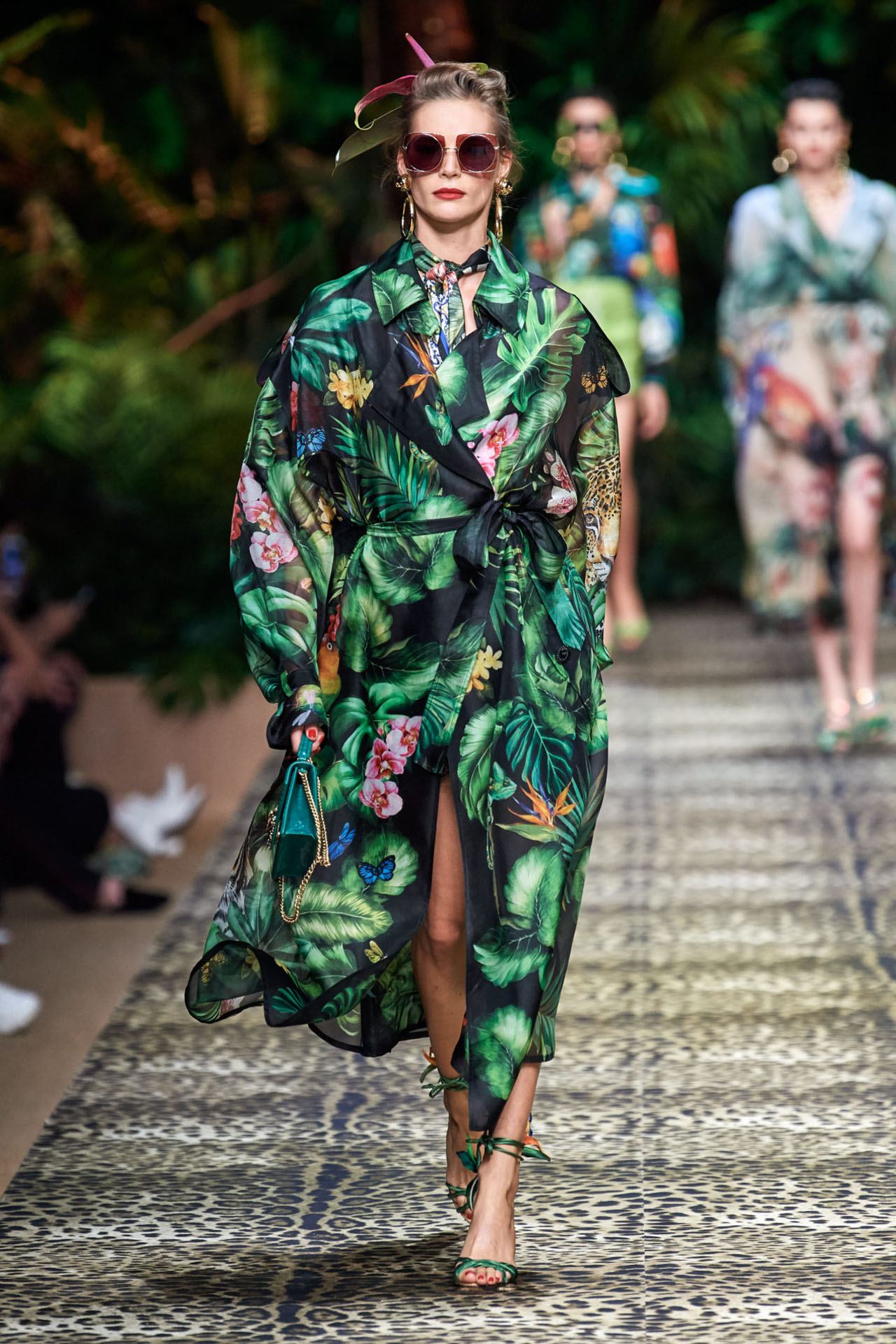UNDRESSING DOLCE & GABBANA’S LONGSTANDING LEGACY OF FASHION, FEMININITY, AND CONTROVERSY
BY RHIANNA JONES
Few fashion houses have consecrated an inimitable aesthetic and signature style more than Dolce & Gabbana. Oozing retro femininity, opulence, and sensuality, from the corset detailing to the oral-leopard prints, you can spot a D&G dress as far as the cat-eye can see. But it can’t go unsaid that co-founders and creative directors Stefano Gabbana and Domenico Dolce’s dedication to Sicilian culture, Italian craftsmanship, and tradition runs far deeper than their designs, manifesting as a steadfast devotion to outdated and outrageous social norms, too.

The pair met in Milan in 1980 while designing for the same house and launched their eponymous line five years later in an emerging talent showcase of Milan Fashion Week. The inaugural show, Real Women, had a tiny budget and featured local women rather than models, who accessorized with their personal items. While D&G has since blossomed into a house of decadence, this commitment to “real women” is forever ingrained in the brand’s DNA. When they presented the now iconic “Sicilian dress” to the world four collections later, they crystallized their foothold in femininity.
Dolce & Gabbana quickly expanded into beachwear, lingerie, and knits. Staying true to D&G’s hyper feminine aesthetic, each line amplied the brand’s “sex appeal,” eventually catching the eye of none other than Madonna who commissioned the designers to create 1,500 costumes for her Erotica album and 1993 global tour e Girlie Show, including a custom corset entirely encrusted in gemstones. Over the next several years, D&G would expand its legion of celebrity to include Kylie Minogue, Beyoncé, and more. From supermodels Christy Turlington and Gisele Bündchen to buxom bombshells like Scarlett Johansson, the designers have long curated an army of femme fatales as brand ambassadors.

As such, from their inaugural Real Women collection to glam granny family campaigns and pregnant models cat walking in Viva La Mamma embroidered finery, the world of D&G heralds women as supreme, yet the two men at the helm continually find themselves caught in controversy. When Domenico Dolce and Stefano Gabbana initially blew up in the ‘90s, it was the age of the supermodel, Eurocentric beauty norms, and the “sex sells” marketing adage. Over the years, however, women’s representation in media has modernized to be more empowering and less objectifying not to mention more reflective of racial, size, and sexuality diversity. D&G, like their designs, hold true to tradition, however. The first offense was a Spring 2007 campaign with a highly oiled-up model in a bodysuit being pinned to the floor by an equally oiled man as three other men looked on lasciviously; then there was 2017’s “thin and gorgeous” scribbled sneakers, Stefano’s public body shaming of various women, and several accounts of heedless racial offense à la SS16’s “Slave Sandals.” Oh, and their countless transgressions with China.

With the impact of 2020, the world is on an awakening journey. Consumers are realizing the value of their voice, and brands are being forced to listen. There’s tremendous power in lobbying our dollars for corporate accountability; it’s up to us who we support and how we choose to spend it.
Dolce & Gabbana
us.dolcegabbana.com
